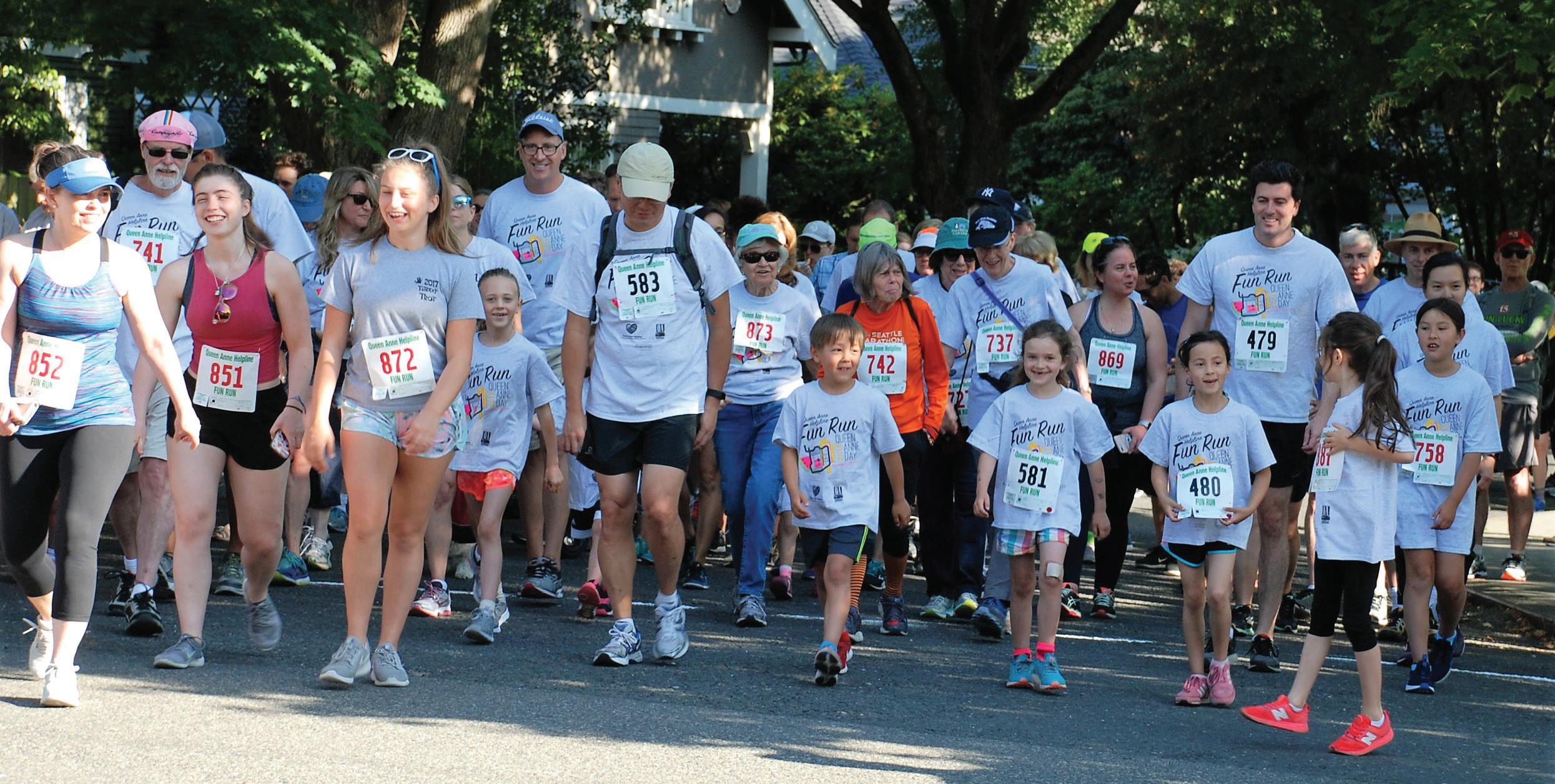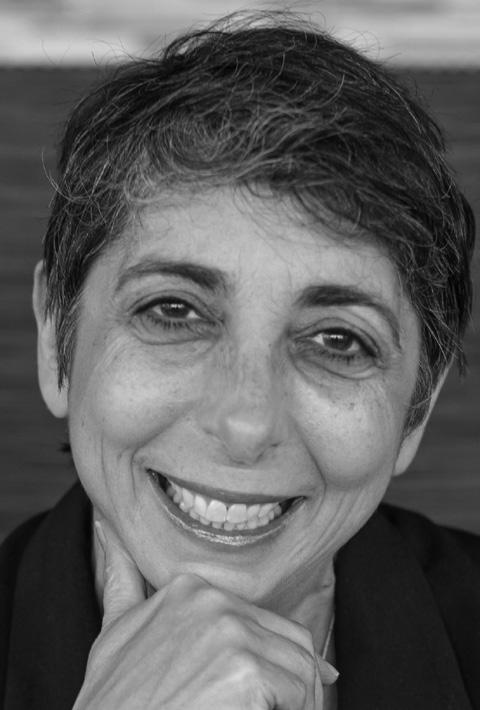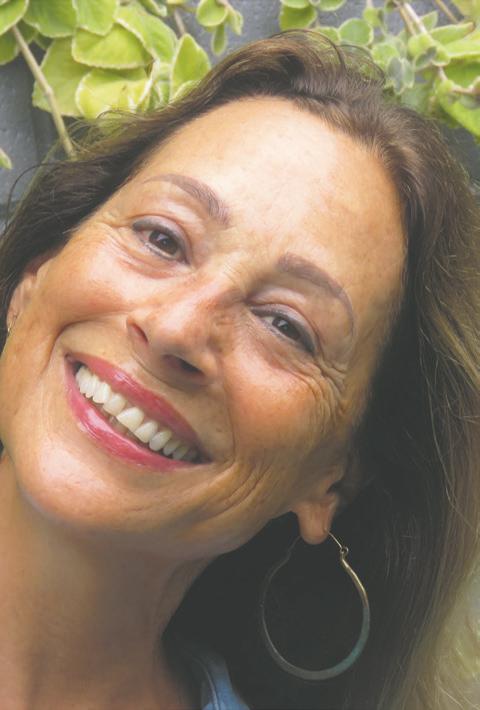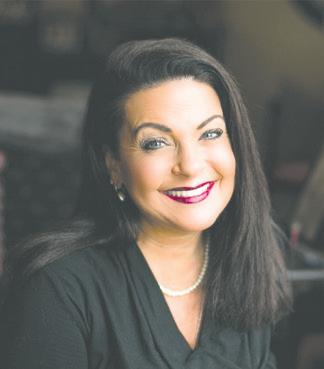RUN FOR HOME RETURNS
 Courtesy Laura Marie Rivera
Courtesy Laura Marie Rivera
On Saturday, June 15, Queen Anne Helpline will be hosting its annual Run For Home walk around the crown of Queen Anne. Neighbors are invited to run, walk, wheel, or stroll the 5.5k route that starts and ends at Queen Anne Lutheran Church and passes some of the city's greatest viewpoints along the way. All are welcome to this community event (including strollers, wheelchairs, and other mobility aids) and kids enter free. Early bird tickets are $35 and available until May 31.
On June 1, prices go up to $40 and they will be $50 on the day of the event. Every ticket includes a t-shirt while supplies last. Tickets and more information can be found at https://www.queenannehelpline.org/runforhome2024.html

King County OKs unincorporated minimum wage hike, ties national high
By Spencer Pauley The Center SquareThe King County Council has approved an ordinance that will increase the minimum wage in unincorporated parts of King County. The legislation increases minimum wage to a high of $20.29, which ties the cities of Tukwila and Renton for the highest minimum wage in the nation.
The annual salary for an employee making $20.29 an hour would be approximately $40,580 for 40 hours per week and 50 weeks per year. According to 2022 Census data, the median household income
for King County is $116,255. The bill was adjusted so that small businesses with 15 or fewer employees and an annual gross revenue of less than $2 million would have an hourly minimum wage rate of $3 less ($17.29). The reduction would decrease annually by 50 cents until no reduction remains. However, some businesses have said that won’t change the impacts to the area. All unincorporated King County businesses will have the same minimum wage by 2030 following the phased in increases. King County
Queen Anne & Magnolia Worship Services

Sunday Worship at 10am Live Streamed on our Facebook page and YouTube. Simply look for Magnolia Lutheran Church.
Twelfth Church of Christ, Scientist
In Person and Online Church Services
All are welcome & warmly invited to join these healing services
For best audio results, please join by clicking on the link from your computer or smartphone and choose “Call Over Internet”
All Zoom Services Meeting ID: 418 806 2637 https://us02web.zoom.us/j/4188062637
Sunday Services 11:00am – 12noon Pacific
Wednesday Testimonies 7:30pm – 8:30pm Pacific
Christian Science Quarterly Bible Lessons
Our weekly Bible Lesson Sermon may be found here: https://quarterly.christianscience.com/
Additional Healing Resources: ChristianScience.com CSWashington.com SeattleMetroReadingRoom.org
For additional assistance, please contact us at seattle12cs@gmail.com or 206.283.2300 ChristianScienceTwelfthSeattle.com
For a Healthier You CHIROPRACTORS
DENTISTS
Queen Anne Dental Group

Dr. Frank J. Calvo & Family
Cosmetic, Implant, & General Dentistry
400 Boston St. 206-284-7812 www.QADG.net




Chiropractic AND Massage Therapy

SERVING THE FAMILIES OF QUEEN ANN E SINCE 1991 1905 Queen Anne Ave N • 206.282.8275 www.QueenAnneChiro.com
Darrell Gibson, D.C. • Sarah Gibson, D.C. Graeme Gibson, D.C.
David E. Goodall III, LMT
Sarah Rose Nottingham, LMT Lauren E. Traynor, LMT
GOOD LEADERSHIP LEADS TO COMPROMISE
Letter to the Editor Imagine if you lived in a Senior Living Community
As a small-business owner, I want to share my appreciation for Seattle City Councilmember Robert Kettle’s work to help restore app-based deliveries by voting to advance changes to the city’s current delivery pay ordinance. Current law has increased app-based delivery costs, which has led to a huge drop-off in orders and a reduction in sales at my restaurant.
Like many Seattle restaurants, appbased delivery is crucial for Uptown China Restaurant. Some days, these orders make up the bulk of our sales. Due to the current law, we’ve seen a huge decline, lowering earnings for workers and our business.
Good government is about reaching a compromise on policy, even if it means taking another look at a policy crafted with good intentions but not working. Addressing the unintended
consequences of the law passed by the previous City Council to make it work for everyone - gig workers, businesses and consumers - is good leadership.
The revised law ensures app-based delivery workers receive at least the city’s minimum wage of $19.97 per hour, provides drivers with $0.35 per mile for deliveries and adds transparency elements to ensure the revised law works as intended for everyone.
The Council’s vote on the proposed changes to Seattle’s minimum pay standard on May 28 corresponds with the 32nd anniversary of the opening of Uptown China Restaurant. I urge Councilmember Kettle to continue to support the revisions to the law so that my restaurant can continue to serve the community. It’s good for business, workers and consumers.
Yu-Mei Wang Uptown China RestaurantSeattle Arts Commission appoints new co-chairs in May meeting
By Skylar Stekly Contributing WriterThe Seattle Arts Commission welcomed two new co-chairs and discussed their funding and advocacy strategies for the coming year.
On Tuesday, May 14, the Seattle Arts Commission (SAC) appointed Holly Jacobson and Kayla DeMonte as their new cochairs. The commission, composed of citizen volunteers appointed by the mayor and City Council, votes new members into these positions annually.
“I look forward to working with my co-chair and the full Seattle Arts Commission to further uplift the arts in our city,” said Jacobson. “We can realize the most vibrant version of our city, through arts integration through a creative economy, public health, and innovation. The Seattle Arts Commission’s role is to represent the community in these endeavors.”
The meeting also welcomed Kelly Davidson as the new Seattle Office of Arts and Culture Deputy Director, a new role in her longtime career working for the City of Seattle.
The commission will be moving forward to complete the goal of staying unified with their partners; the mayor’s Office, the Council and Arts. This will continue through activating an action plan with the Council over the next 6 months.
An opening presentation addressed
important information about SAC for new members, emphasizing their mission of supporting the City by advocating for arts policy, creating access for equitable participation in the arts, and fostering enriching arts engagement for all residents.
“Each one of us here brings perspectives of people that are not here,” said Vanessa Villalobos, previous co-chair of the SAC. She emphasizes lifting the voices of those missing from the commission meeting as well as those who have been underrepresented in Seattle arts.
In preparation for the city’s annual budgeting process, Finance Manager Alexandra McGehee presented an overview of the City of Arts budgeting strategy. This presentation focused on changes in city budgeting, addressing executive budget process milestones and the use of the Arts 2024 budget.
The Arts 2024 grants and opportunities are funded predominantly by the Arts and Culture Fund and Municipal Tax Fund. Some operating budget goes into reserves which protect Arts from large swings in revenue forecast.
“The Arts and Culture Fund is what we live and breathe,” said McGehee.
The city’s April 2024 economic and revenue forecast shows admissions tax revenue recovery and growth.
Admissions tax is growing, showing a $1.4 million increase in what is expected to be brought in this year compared to last.
We have a board/party game in my house called “Imaginiff” where each player tries to guess how one of the players would respond to a particular scenario. A question that I often ponder in my role at Bayview but is definitely not included in the game is “Imagine if you moved to a senior living community when you grew older.” Just hold that question in your mind for a moment and observe your reaction and/or think about how others would react. Perhaps a frown? Furrowed brows? Maybe even a chortle –who me?

followed by a stimulating lecture by a visiting professor, a gourmet meal prepared by a talented chef, an evening happy hour with friends — you get the idea. This is the reality of many senior living communities today. Add the bonus of health care support if/when needed and you have your bases covered for healthy and purposeful aging.
Just the phrase “senior living” can conjure up all sorts of misconceptions and this makes sense. The “old folks’ home” of days gone by is very different than today’s senior living communities and unfortunately the media has not been our friend in helping older adults recognize the evolving nature of our industry. Today’s senior living environments can and should be places of discovery and reinvention with opportunities for lifelong learning, social gatherings, fitness and wellness, and much more.
Imagine if one moved to an environment where the day begins with a swim in a warm water pool,
WAGE from Page 1Æ
Councilmembers Pete Von Reichbauer and Reagan Dunn voted against the minimum wage increase.
“I fear that this massive wage hike will harm, rather than help, my constituents,” Dunn said in a statementfollowing the ordinance’s approval. “This is bad policy, and not nearly nuanced enough to support small businesses and workers alike.”
The Center Square previously reported on businesses in unincorporated King County calling for a “total compensation model,” which includes an employee’s base salary, as well as the value of any benefits and tips received.
Imagine if as we age, we enter an environment of renewal, of personal growth, of discovery, of friendship and of acceptance for who we are and what we can share that encourages others to find their own sense of renewal and growth. Imagine if that’s what came to mind when someone mentions the term “senior living.” No more frowning.
A final note: senior living does not need to be a physical place, but it does need to be a mindset. And as readers of this column know, there is much research on the benefits of thinking positively about aging. So, whether senior living is a bricks and mortar community or a neighborhood or simply a way of being, consider embracing and savoring all it can bring.
Nancy Weinbeck is the CEO of Bayview senior living community in Queen Anne.
Dunn introduced an amendment to the ordinance, which would have allowed tips, gratuities, bonuses, and money paid by an employer towards an employee’s health benefit plan to count toward the hourly minimum wage rate.
Dunn noted that other cities in King County have a total compensation model as part of their minimum wage, including Seattle. Dunn also introduced an amendment that would have exempted rural areas from the increase.
The council denied Dunn's amendments.
The new minimum wage for unincorporated King County will take effect Jan. 1, 2025.
IT’S A SIGN
On a bright September morning, I took the ferry over to Bainbridge Island to check out Rob Satterwhite’s metal shop. The first time I viewed one of Rob’s sculptures, it made me wonder if I could combine the beauty of his work with my writing, a question I’d been asking myself almost daily since receiving an Individual Artist Grant from Arts & Humanities

Bainbridge—a grant to create a sign. A sign! Wonderful because, frankly, when else would I find the time to create a sign? It’s not like me to get up in the morning and ask myself what will my next sign be?
And not just any sign.
A sign that reminds us that there is something larger than us. Because there is. And I’m relieved about that. A sign that could be fun to notice on your way to god knows where, and think what’s that? Before you walk over to read it.
Remember the word fun.
When Rob showed me the shape of a heron cut into red steel, I knew two things: I wanted that heron. And I wanted that red.
Rob smiled. And what his smile said to me was, I love red, too.
That was part of the problem. In the Pacific Northwest people don’t often wear or decorate in red. One of my favorite moments occurred right then: Rob didn’t care what most people do any more than I did. He freely paints cold hard steel a soft warm red.
I don’t know the word for this refusal of red. Reserved, probably. But it could just as well be inhibited. “I like muted tones,” my neighbor said about her brown welcome mat, and that seemed about right. My mat, directly across from her door, is garland of red radishes in a yellow setting. I think it bothers her.
On my way to Rob’s, I stopped to gaze at an old red farmhouse. When a car turned into the drive, I didn’t wave. I don’t know why I didn’t. I don’t know why I just stood there as if possessed. That house—well, really, it was more than the house. It was the woman who lives deep inside of me who loves the Northwest, then can't bear it, then loves it, then longs for somewhere redder—the earth, the sky, the lipstick! Il rosso è bellissima!
I can tell you that turning a sheet of steel into a stable sign takes a lot of faith, but I’ve learned if you keep your eye on the goal, something amazing eventually happens.
Something did. Our sign is bellissima, no question.
I nevertheless did not know where it would go.
Someone told me to contact Steve Rabago at Arts & Humanities, so that’s what I did. Timing is everything.
Steve told me that the new ferry terminal on Bainbridge Island was looking for an installation, and, well, one thing led to another in terms of paperwork on Steve’s part because we were dealing with the state here. Eventually I received an email with approval and a contact name. Our sign would be installed in that little circular area off to the left of the remodeled ferry terminal.
A good example of the other shoe dropping: When it was near time to install our sign, our contact said, “We decided to move in a different direction.”
Those words can make you cry, and I cry easily.
“What direction?” I asked. But she didn’t hear me, or didn’t want to hear me, I couldn’t tell which. “When were you going to let us know?” I said.
“Someone should have called you by now.” I was not surprised that she said this. I was even less surprised that she didn’t admit that that “someone” was her. It’s a lot easier to say that someone else should have done the right thing than it is to take responsibility. My dislike of bureaucracy grew second only to my distain of art-by-committee, a process that is never about passion but red tape.
Next time you ferry over to the island to wine taste, shop, or bicycle the island’s back roads, take a look at the commemorative bust of Walter Keys that went up at the new ferry terminal instead of our sign.
The first thing I thought when I saw it was, how can our steel sign compete with a memorial bust of a “veteran of the SpanishAmerican War,” cast in bronze (bronze!).
It cannot.
Walter is the real thing, which is to say he is the real thing to a public committee: a local business man with a cigar and a fedora. While our sign makes people smile and this makes me happy because I like when my work does that.
My point is, memorial statues are not meant to make anyone happy, they are meant to inform. And to be fair, this is, and should be, the first concern of any administration.
So.
I asked the kind owners of Bainbridge’s Town & Country Market if they’d consider our sign and they said they’d love to have it. Actually, I don’t think they used the word “love.” That’s me. That sounds more like me.
My friend Fatima, smart about all things artistic, says that our sign “got the better spot.” It’s spring now, and the sun hits our sign at a different angle, but there it is, looking as if it was designed for the very spot it now hangs.
I’ve told everyone I know this story. I’ve even told innocent bystanders waiting for the ferry. And now I’m telling you. Because every reader makes a difference.
But readers, let’s be clear, it was less a choice than a matter of grit. Our sign had nowhere else to go — I did it for the sign.
Mary Lou Sanelli, is the author of Every Little Thing, a collection of essays nominated for a Washington State Book Award. Her previous works include poetry, fiction and non-fiction. She also is a speaker and a master dance teacher. For more information about her and her work, visit www.marylousanelli.com.
Proposed $1.45B Seattle transportation levy may expand before council vote
By Spencer Pauley The Center SquareMembers of the Seattle City Council continue discussing a possible $1.45 billion transportation levy, with potential for the levy to increase funding even more.
Earlier this month, Seattle Mayor Bruce Harrell announced an updated transportation levy proposal that boosts the initial $1.35 billion eight-year levy to the current $1.45 billion levy to fund transportation projects prioritized by Seattleites.
During Tuesday morning committee meeting centered on the proposed transportation levy, Seattle City Councilmember Cathy Moore said that there is a possibility that the levy could increase in size as a result of the committee’s discussions.
City Council President Sara Nelson added that city staff will need to look deeper into the levy to ensure funds cover all bases of transportation needs in the city.
“We need to understand how much more money do we need [and] how well is the existing levy performing when it comes to the things that are continually increasing our costs year-over-year,” Nelson said at the committee meeting.
Seattle already has the nine-year, $930 million Levy to Move Seattle passed in 2015, but it is set to expire at the end of this year. It costs the owner of a median-priced Seattle property about $24 per month, or $288 per year.
According to Seattle Central Staff Analyst Calvin Chow, a median homeowner in Seattle would pay about $470 next year for the current proposed levy. That is an increase of 56% – $169 per year – from the current Move Seattle Levy.
During the public comment period of the meeting, some spoke in favor of increasing the levy from $1.45 billion to $1.7 billion in order to see more projects that improve biking infrastructure and traffic safety.
If the levy were to increase to $1.7 billion, a median homeowner would pay $550 per year. A $1.9 billion levy would cost a median homeowner $615 per year.
Seattle central staff flagged one potential issue with the proposed levy: if passed by voters, the minimum general fund requirement would be $50.7 million in the first year of the levy. The city is currently working to address a projected $245 million budget deficit next year.
The select committee on the 2024 transportation levy will hold three more meetings on June 4, June 18, and July 2. There will be one more public hearing on June 4.
If the levy is approved by the select committee on July 2, the Seattle City Council could take a final vote on July 9 to put the measure before voters this November.
Rider survey indicates rough waters remain for Washington State Ferries
By Carleen Johnson The Center SquarePassenger unhappiness remains a major challenge for Washington State Ferries, according to the results of a recent survey.
Members of the Washington Transportation Commission were briefed last week on the 2024 FROG survey of riders and nonriders. FROG stands for Ferry Riders Opinion Group. The survey was conducted between January and March.
Notable takeaways include major dissatisfaction for riders in what's referred to as the triangle route: Fauntleroy-Vashon-Southworth.
“On-time performance we know is a problem,” said WSF Assistant Secretary John Vezina. “The triangle is on a two-boat schedule that was supposed to be a 24-hour emergency schedule, that they’ve been on for almost three years. It means the boats are late because we don’t have a boat to add right now to restore three-boat service.”
Even worse, the route is sometimes reduced to a single ship because of breakdowns or crew unavailability.
A recent West Seattle Blog article detailed the frustrations for islanders, who formed Islanders for Ferry Action in September 2023. It’s not the only route hurting. San Juan Island residents are often stranded without ships or delayed sailings, according to Salish Current.
Nearly 3,800 ferry riders and 544 non-riders took part in the FROG survey, with the number of riders on all routes saying they are either satisfied or mostly satisfied with service at 54%, which is down from 58% in 2023.
The Vashon triangle had the greatest percentage of riders saying they are dissatisfied with service, at 70%.
Survey Program Project
Manager Chelsea Benning told the commission, “In 2024 we did see double the number of riders talking about maintenance issues.”
One of the commission members
asked the presenters, “Are we doing anything to bring the dissatisfaction numbers down to single digits? I mean are we happy with that or are we doing anything about it?”
Vezina responded.
“I can assure you that we are not happy about double-digit dissatisfaction increases," he said. "I’m really pleased that for the first four months of this year we were at 98.7% reliability, but for the folks that are on those routes not restored, it doesn’t feel that way.”
WSF defines "reliability" as the percentage of scheduled trips that depart within a specific time frame, Vezina explained. A delayed trip is still considered "reliable" by the agency.
Nevertheless, Vezina noted the ongoing headaches for riders on Vashon Island.
“I mean, honestly, I’d like to find the three people on Vashon who said our service is satisfactory and give them a hug because it is tough there," he said.
Things are improving, he noted.
“We know we’re getting better; I mean two years ago we were in crisis," Vezina said. "Now we are in recovery, but if you’re on one of those routes with decreased service, it certainly doesn’t feel that way."
He pointed out a final question on the survey where respondents were asked if they have had a pleasant or outstanding customer service experience with a WSF employee.
“We got 758 responses from customers calling out employees for going above and beyond," Vezina said.
“I work with a lot of really great people who are working hard every day to make this better," he said. "No one is callous about the impacts to our customers."
Trouble with the state's ferry service has become an issue in this year’s race for governor, specifically the continuing impact of the loss of ferry workers due to the COVID-19 vaccine mandate and Democratic frontrunner Bob Ferguson's backing of building diesel ferries
LOCAL AGENTS


if it gets new ships in the water sooner. That has put him at odds with fellow Democrat Gov. Jay Inslee, a proponent of electric ferries, and GOP gubernatorial candidate Dave Reichert, who took Ferguson to task for endorsing an idea Republican lawmakers proposed months ago.
